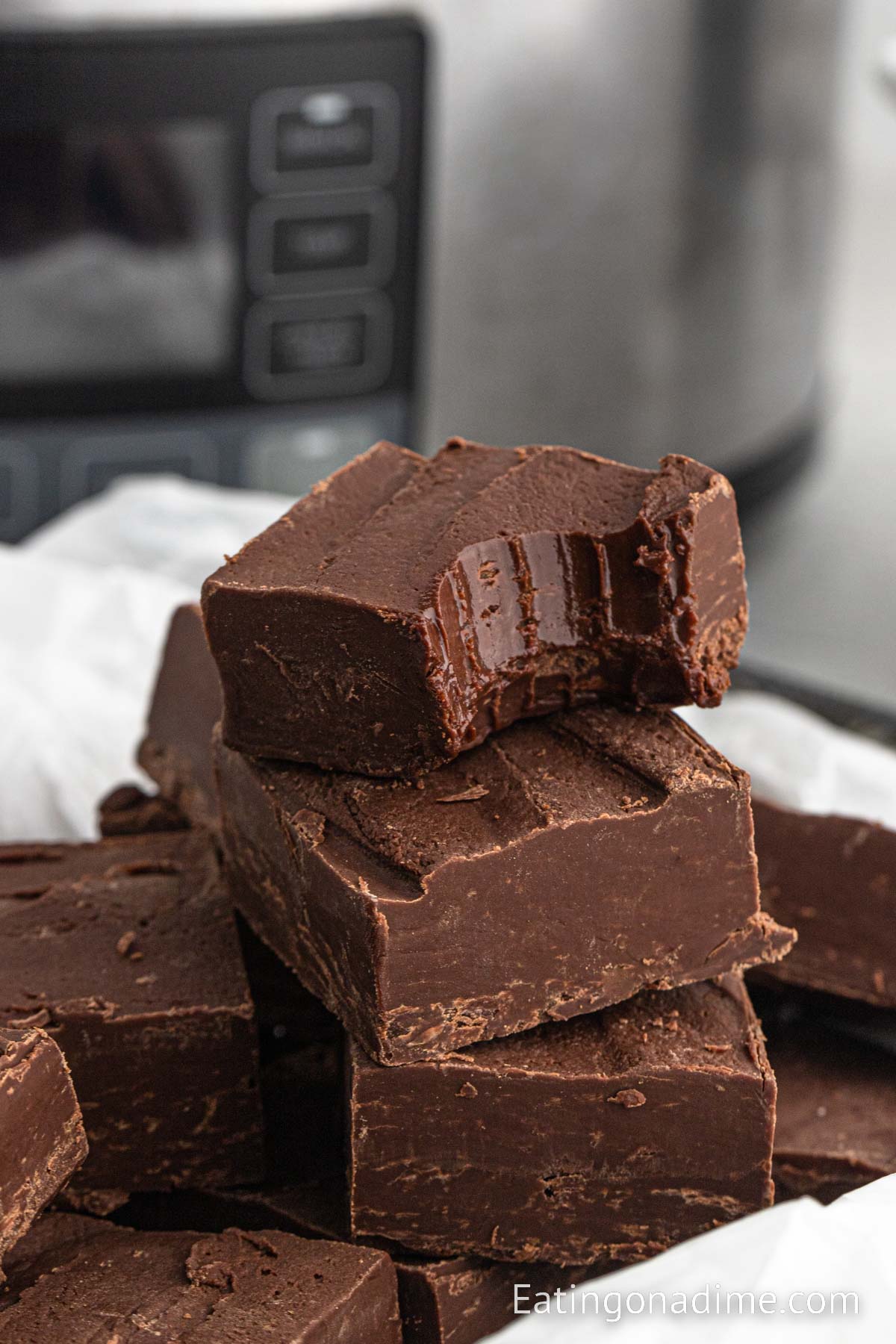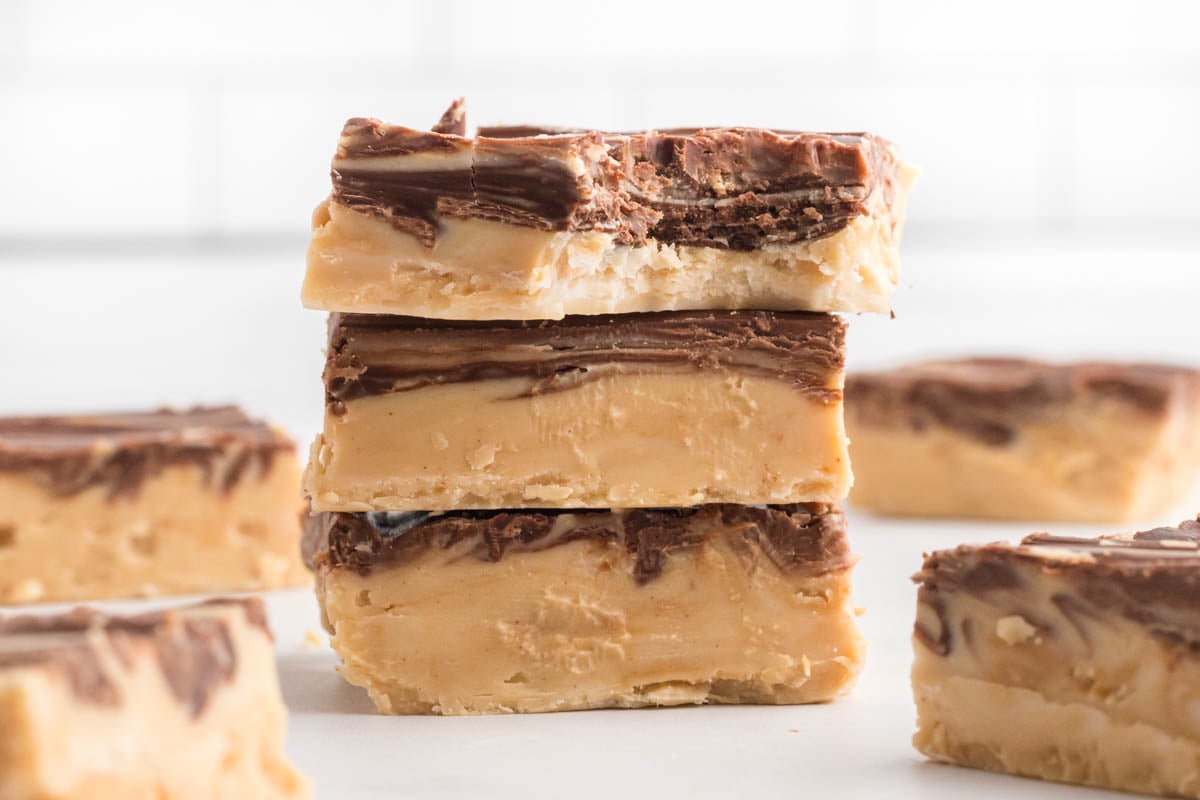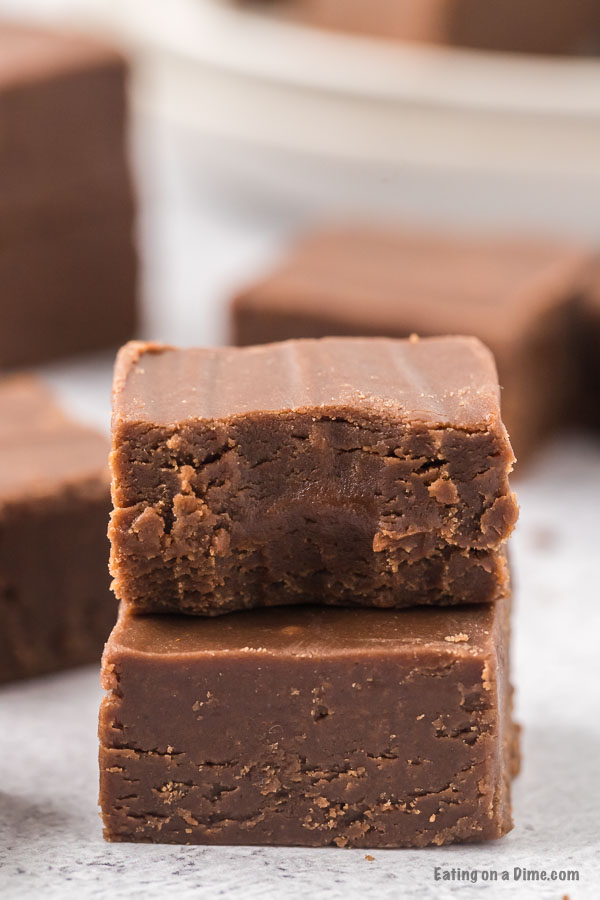This post may contain affiliate links. If you make a purchase through links on our site, we may earn a commission.
With its rich and velvety texture, fudge is a beloved confection. That has stood the test of time as a favorite snack and dessert. From its humble beginnings as a sugary treat made on stovetops to the wide array of flavors and variations available today.
Fudge continues to captivate our palates and satisfy our cravings. That’s why to be able to satisfy your cravings every time, you might be wondering if you could freeze fudge.

Can You Freeze Fudge?
Are you wondering what to do with that extra batch of fudge you made or received as a gift? Freezing fudge with condensed milk is not only possible but also a great way to extend its shelf life. It also ensure that you can savor its delightful flavors at your own pace.
Whether you’re a fudge enthusiast looking to stock up or simply want to preserve the goodness for later enjoyment. Freezing fudge is a convenient option that allows you to indulge in this treat whenever the craving strikes.
In this step by step guide, we’ll explore the ins and outs of freezing fudge. Including the proper steps to preserve its texture and taste. So, if you’re curious about how to keep your fudge fresh and delicious for weeks or even months. Read on to discover the secrets of freezing fudge like a pro.
You can use these steps whether you are freezing peanut butter fudge or store-bought fudge. Even fudge that has nuts or candies on the top.
Can You Store Fudge?
When it comes to storing fudge for the long term, the freezer is your best friend. Freezing fudge is a fantastic option that allows you to enjoy its delectable flavors and smooth texture at your own pace.
To store fudge in the freezer, ensure that it has cooled completely to store at room temperature. Cut the fudge into individual portions or smaller squares for easier thawing and serving later.
Wrap each piece tightly in plastic wrap or place them in air tight containers to prevent freezer burn. This helps to properly seal the fudge mixture.
Can You Freeze Homemade Fudge?
Absolutely! Homemade fudge can be successfully frozen, allowing you to enjoy its delightful flavors even beyond its initial freshness. Freezing homemade fudge offers several benefits, making it a practical and convenient option. Here’s why freezing homemade fudge can be advantageous:
- Extended Shelf Life: By freezing homemade fudge, you can extend its shelf life significantly. Fudge is a perishable treat, and freezing helps prevent spoilage and maintain its quality over time. This allows you to enjoy the fudge at your own pace, without worrying about it going bad.
- Convenience: Freezing homemade fudge provides you with the flexibility to have a stash of delicious treats on hand whenever you desire. Whether you’re planning for a future occasion, or want to portion out servings for later enjoyment. Freezing allows you to conveniently store it until you’re ready to indulge.
- Preserving Freshness: Homemade fudge is best when it’s fresh and at its peak flavor. Freezing helps preserve the freshness of the fudge by preventing it from drying out or absorbing unwanted odors from the surroundings. When properly stored, frozen homemade fudge can retain its original taste and texture for a considerable period.
- Versatility: Frozen homemade fudge can be used in various ways. You can thaw and serve it as-is. Incorporate it into other desserts or recipes, or even give it as a thoughtful homemade gift. The versatility of frozen fudge opens up a range of possibilities for enjoying it in different ways.
How To Freeze Fudge
Freezing fudge is a simple process. That helps maintain its freshness. Plus quality over an extended period. To freeze fudge effectively, follow these steps:
- Allow the fudge to cool completely: Before freezing, ensure that the fudge has cooled down to room temperature. The individual pieces helps to print cracking.
- Cut the fudge into portions: Slice the fudge into individual servings or smaller squares. This will make it easier to thaw and serve later.
- Wrap the fudge tightly: Individually wrap each piece of fudge in plastic wrap. Ensuring it is tightly sealed to prevent air exposure and freezer burn. You can place the fudge portions in air-tight container or wrap them in aluminum foil or plastic wrap.
- Package for long-term storage: If you plan to store the fudge for an extended period. Place the individually wrapped pieces in a freezer bag or airtight container. Label the container with the date for easy reference.
- Freeze the fudge: Place the wrapped fudge portions or containers in the freezer. It’s ideal to arrange them in a single layer. This prevent these sweet treats from sticking together.
- Thawing and serving: When you’re ready to enjoy the fudge, remove the desired number of portions from the freezer. Then let them thaw in the fridge for a few hours or at room temperature for approximately 30 minutes. Once thawed, the fudge should regain its original texture and flavor.

Tips for Freezing Fudge
Here are some helpful tips for freezing fudge:
- Cool completely before freezing: Allow the fudge to cool completely at room temperature before freezing.
- Use proper wrapping materials: Wrap each piece of fudge tightly in plastic wrap to prevent air exposure and freezer burn. You can use airtight containers or wrap the fudge in aluminum foil. The goal is to create a barrier that protects the fudge from moisture and air.
- Portion into individual servings: Cut the fudge into individual portions or smaller squares before freezing. This makes it easier to thaw and serve only the amount you need without having to thaw the entire batch.
- Store in a freezer-safe container: If you plan to store the fudge for an extended period. Transfer the wrapped fudge portions into a freezer-safe zip-top bag or airtight container. Ensure the container is properly sealed to prevent moisture and freezer odors from affecting the fudge’s quality.
- Freeze in a single layer: If possible, arrange the wrapped fudge portions in a single layer. This is to prevent them from sticking together. This allows for easier portioning and prevents the pieces from clumping.
- Thaw gently before serving: When you’re ready to enjoy the frozen fudge. Transfer the desired portions to the refrigerator and let them thaw slowly. Thawing in the refrigerator helps maintain the fudge’s texture and flavor. If you prefer a quicker thaw, you can let the fudge sit at room temperature for about 30 minutes.
By following these tips, you can ensure that your fudge retains its quality and remains delicious even after freezing.
How Long Will Fudge Last?
When stored properly in the freezer. Frozen fudge can maintain its quality for an extended period. Generally, frozen fudge can last anywhere from 2 to 3 months. However, for the best taste and texture, it’s recommended to consume it within the first 1 to 2 months of freezing.
Over time, the quality of frozen fudge may start to deteriorate. It can develop freezer burn, which affects its taste and texture. Freezer burn occurs when the moisture inside the fudge evaporates and leaves dry spots on its surface. While frozen fudge is still safe to eat even if freezer burn occurs, it may have an undesirable texture and flavor.
Remember that these timeframes are general guidelines. Such as the ingredients used, storage conditions, and the quality of the fudge itself.
It’s always best to use your judgment. Rely on visual and sensory cues to determine if the frozen fudge is still in good condition before consuming it.

How to Thaw Frozen Fudge
Thawing frozen fudge is a simple process that ensures it regains its desired texture and flavor. Here’s how to thaw frozen fudge:
- Transfer to the refrigerator: Take the desired amount of frozen fudge from the freezer and place it in the refrigerator.
- Allow time to thaw: Let the fudge thaw in the refrigerator for several hours or overnight. Depending on the size and thickness of the fudge. Thawing times may vary, but typically, fudge will thaw completely within 4 to 8 hours.
- Check for readiness: After the recommended thawing time, check the fudge for doneness. Gently press the fudge with your finger. If it feels soft and pliable, it is likely thawed completely. If it still feels firm or slightly icy, continue to let it thaw in the refrigerator.
- Serve and enjoy: Once the fudge is completely thawed, remove it from the refrigerator or water bath. Unwrap from wax paper and serve the fudge at room temperature. Slightly chilled, according to your preference.
If you need to thaw the fudge more quickly. You can place the wrapped fudge in an airtight bag or container and submerge it in cool water. Make sure the packaging is watertight to prevent water from seeping in.
Change the water every 30 minutes to keep it cool. Thawing in water can take anywhere from 30 minutes to 2 hours, depending on the size and thickness of the fudge.
It’s important to note that once fudge is thawed, it should not be refrozen. Thaw only the amount of fudge you plan to consume at a given time. Thawed fudge can be stored in an airtight container at room temperature for several days.

How to Tell if Fudge has Gone Bad
Fudge is a perishable treat. It’s important to know how to determine if it has gone bad to ensure food safety. Here are some signs that indicate fudge may have spoiled:
- Appearance: Visually inspect the fudge for any noticeable changes. Look for mold growth, unusual discoloration, or an off-putting appearance. If the fudge has developed a green or fuzzy texture or shows signs of mold, it should be discarded.
- Texture: Check the texture of the fudge. If it has become excessively dry, crumbly, or has an unusual texture. That differs from its original creamy consistency, it may have gone bad.
- Smell: If you detect any unusual or sour odors, it is a sign that the fudge has likely spoiled. Fresh fudge should have a pleasant aroma, characteristic of its ingredients.
- Taste: If the fudge tastes noticeably different from when it was fresh, has a rancid or off flavor. If you experience any unusual sensations in your mouth after consuming it. It’s a sign that the fudge may have spoiled and should not be consumed further.
- Time: Consider the time since the fudge was made or its expiration date, if available. Fudge is best enjoyed within a certain timeframe. Consuming it past that period increases the risk of it going bad.
When in doubt, it’s always better to err on the side of caution. Discard the fudge if you suspect it may have spoiled. Proper storage and timely consumption can help minimize the chances of fudge going bad. Ensure you can safely enjoy this delectable treat.
Best Fudge Recipes
- Peanut Butter Chocolate Fudge
- Tiger Butter Fudge
- Rocky Road Fudge
- Best Chocolate Fudge
- Caramel Fudge
More Freezer Tips
- Can You Freeze Tortillas?
- Can You Freeze Butter?
- How to Freeze Bananas
- How To Freeze Waffles and Pancakes
- Can you Freeze Buffalo Chicken dip





